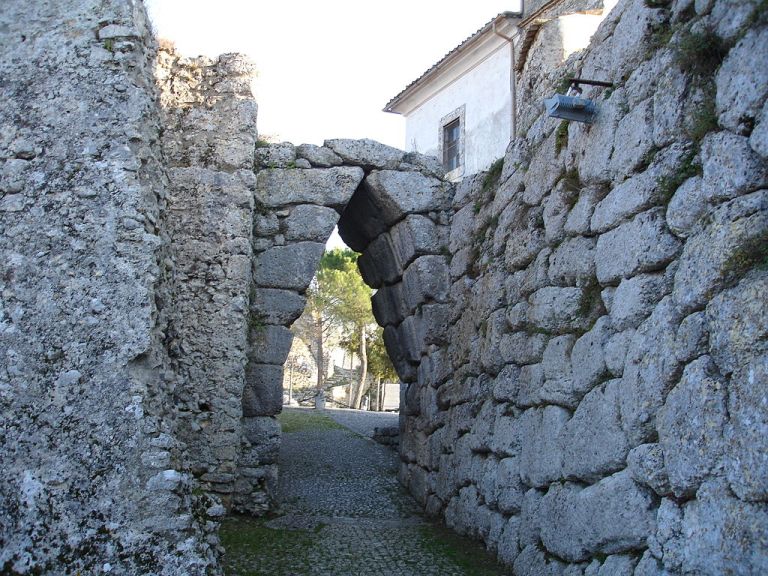
It is known that Latin has an Indo-European origin and this rightly leads us to believe that our culture is also rooted in this vast family of initially nomadic peoples who have invaded Europe in multiple waves over time. However, the stories of the founding of Rome and the Roman Kingdom do not describe a nomadic people without knowledge of agriculture, but a resident civilization with a religion that undoubtedly covered rural aspects. The transformation of the Latins is the result of a long cultural process during which the Indo-European nomads have re-elaborated and adapted to their thinking elements of the previous populations. The Latins who founded Rome gathered the legacy of ancient cultures blending it with the Indo-European component.
What do we know today of Europe before the arrival of the Indo-Europeans? Some 12,000 years ago in the Fertile Crescent some populations began to cultivate the land for the first time. The ancestor of today’s grain had the excellent characteristic of being able to be conserved, once harvested, for a long time, but to take advantage of this fundamental quality it was necessary to build storage areas. Thus, the first farmers began to build permanent shelters, abandoning nomadism.
On the basis of archaeological findings, agriculture extended slowly along with the people who practiced it, i.e. there was no invasion of Europe by the first farmers, but an expansion of agricultural techniques. In fact the first traces of the Neolithic appeared in the south-east of Europe just in 7000 BCE, so it took three thousand years before agriculture knocked at the doors of our continent. The Balkan peninsula, which was the first to host the European Neolithic, was in turn the starting point for a new expansion in two directions. Some people followed the valleys of the Danube and the Rhine, towards the regions of today’s Czech Republic, France and Holland; others followed the coasts of the Mediterranean, and passing through Greece, Italy, and southern France, eventually reached the Iberian Peninsula.
The expansion towards Central Europe has been reconstructed through the finds of the so-called Linear Pottery Culture, where the pottery presents ornamental incisions of straight lines and the necklaces are embellished with Spondylus type shells. The oldest find dates back to 5300 BCE in the Balkan peninsula in the frame of the Vinča culture. Other finds then follow towards France, Belgium and the Netherlands with an average expansion rate of 4 km per year. This culture was also absorbed by the Mesolithic populations of Denmark, so that in the fifth millennium there was a vast area with a uniform culture. We must imagine a world with enormous natural expanses, forests and meadows, a landscape without roads, with a world population equal to about one thousandth of today’s, and the whole of Europe was probably inhabited by less than a million people, so that probably the migrations that made the Linear Pottery Culture propagate were carried out by groups of a few dozen or at most hundreds of individuals. In central Europe, during the fifth millennium a network of large-scale trade exchanges was generated, between Denmark and the Czech Republic and the Balkans.
The Neolithic expansion also occurred along the coasts of the Mediterranean, thus touching the Italian peninsula. In this case too archaeologists identify culture on the basis of the pottery style. This culture is characterized by pottery stamped by a “Cardium” shell, hence the name Cardium Pottery. This culture appeared in Apulia, in Irpinia and Basilicata in 5500BCE, extending to Liguria, Mediterranean France and Spain. In Central Italy between the Tiber and the Arno, between 4000 and 3500BCE dominated the culture of Cardium Pottery whose artifact had a great affinity with those found in Corsica and Sardinia.
It is clear that even southern Europe in those times was inhabited by a fairly homogeneous culture. What do we know about the lifestyle of those people? It is thought that they were peaceful populations because the inhabited centers were not fortified, and they were also on the plain, not on the top of hills. The palisades found seem rather to defend against animals, or to prevent the cattle from escaping. They were farmers, but they also had domestic animals, sheep, goats and pigs and in any case they could hunt and fish. They lived in wooden houses from 40 to 100 square meters, with two or three rooms. These people knew copper and used gold, for tools and ornaments, but not for weapons as these metals are too soft. They were excellent ceramists, so much so that today we use the pottery to distinguish their cultures, and they were masters in usage of colors. Not much is known about their society, but it seems that they were not divided into classes. Many objects and drawings that were probably used for religious purposes have been found, such as red spirals, vases in the shape of humans or birds, or other animals, oil lamps, spoons and figurines of the Serpent Goddess or the Bird Goddess, in addition to the numerous “Venus” in ceramics. It is believed that that society mainly venerated a female divinity, a Great Mother, and that it was of a matriarchal type. The female divinity was linked to the cycles of the earth and the moon and perhaps this goddess was called Ana or Dana: many decorations were found with motifs of vulvae, breasts, female sacred images. Indeed, the importance of women in Etruscan society could have a pre – Indo-European derivation. The Etruscans could indeed be a people descended from the Neolithic inhabitants. In addition to the Etruscans, there were other pre – Indo-European populations in Italy of which we are aware: the Rhaetian people, the Camuni, the Ligures, the Sicanians and the ancient Sardinians of the Nuragic civilization.

The Rhaetians were a linguistically similar to the Etruscan population. They lived in an area between Alto Adige, Swabia, Bavaria and Slovenia. The Rhaetians over the centuries were influenced by the Celts, while the Etruscans lived under the Latin sphere of influence. The Camuni people lived in the Camonica Valley and according to the alphabet and the discoverd inscriptions belonged to the family of the Rhaetians and Etruscans: they left us more than 300,000 rock carvings. The Ligurians initially occupied the northwest of the Italian peninsula. Already in antiquity they debated about their origin and even today there is doubt whether they were pre – Indo-European or Indo-European. It is likely that they were a pre – Indo-European population that gradually merged with the Indo-European Celts. When the Romans arrived, they found a mixed population, with a preponderance of Ligurians in the south and Celts in the north. According to Greek historians, the Sicans lived in Sicily and had come from the Iberian peninsula or from the border between Gaul and Italy, pushed by the Ligurians. The Nuragic civilization in Sardinia, from a study based on toponyms, also appears to be pre- Indo-European, related to Basque and Iberian languages.
According to today’s knowledge, the Latins entered the peninsula in the second millennium BCE with the Siculi and the Oenotrians. In the first millennium BCE there was a second Indo-European wave with the arrival of Veneti, Umbrians, Samnites, Sabines and Messapians. However it was, the Latins absorbed the previous populations, which probably had a cultural continuity with the Neolithic populations. Unfortunately, with the exception of the Etruscans, we have just a few documents that report the lost languages. In the case of the Etruscans, the body of writings is broad but not enough to allow a complete reconstruction of the language.
It is interesting to mention the case of writing of the Vinča culture. Some finds, dating from the sixth and fourth millennium BCE, present a wide repertoire of rectilinear signs that could be a writing, used for ritual and religious purposes. About fifty of these signs are the same as those that appear in the linear A of Crete, the writing used by the Minoan civilization. Since these writings begin to appear in Crete after the disappearance of the Vinča civilization, probably after the Indo-European invasions, it could be hypothesized that the fugitives brought writing to Crete. If the Vinča civilization really knew the writing, then this would have appeared in Europe preceding the invention of writing by the Sumerians by two thousand years.
In the European territory, the pre – Indo-European languages were absorbed by the Indo-European ones with one exception: the Basque island, heroically resisting over the millennia the French sphere to the north and Spanish to the south. In Europe there are other not – Indo-European languages: Finnish and Estonian, whose origin is not related to the European Neolithic, and the Hungarian, which arrived in Europe in historical age. Basque therefore linguistically provides a single example throughout the continent.
Even if we have no written documents, it is still possible to identify words preserved from the pre – Indo-European world through Latin and comparative analysis of other languages. The proto-Latin of the Indo-European population would have been mixed and enriched with the language of the already existing local population. This language is technically called “substratum”. Not only the Latins but various Indo-European peoples would have accepted local terms of the earlier language in their language. Suspicious words are those that, for example, are found only in an Indo-European language but not in others, since it is expected that if a word is Indo-European, it is transferred to more derived languages. Moreover the Indo-European words obey certain rules of formation (arrangement of consonants and vowels, type of consonants, etc.): if a word moves away from these general rules, it is suspected of being absorbed by another language. The words that best lend themselves to being accepted are those relating to technologies or flora and fauna unknown to the invaders at the time of their arrival. For example, a Latin would have asked a native: “What is this plant?” And he would have learned that the locals called it “mint”. Other words in English that have an ancient pre – Indo-European origin are: oregano, rose, lily, fig, violet, laurel, and even wine, which is obviously linked to agricultural production. Other pre – Indo-European roots derived from toponymy are * kar and * lap / * lab, meaning stone. From the latter derives the Latin lapis and perhaps also labrys, the ritual axe.
The Latin word “urbs”, the urbe, derives from the substratum. Indeed, in this case, one could even identify a coincidence with the ancient Sumerian “ur” and the Basque “uri” who want to say “city”. Basque and Sumerian may perhaps be in some way related languages in pre – Indo-European culture. In Greek there exists the term of probable Minoan origin labyrinthos (labyrinth) where one could identify * lab – * ur-, “stone city”, however there are many theories on this etymology.
Although the Indo-European origins of Rome cannot be seriously questioned, their cultural weight has been overrated. For example, the differences present in ancient times between Latins, Germans and Slavs are remarkable and only the linguistic analysis in the modern age has highlighted their common origin. They were very different peoples, with different societies and religions that were difficult to compare. What has made the Latin people special is therefore not only their Indo-European origin but their cultural path, their transformation through prolonged contact with pre-existing millenary cultures along those centuries of which we have no written testimony, but mute finds that seek to tell us a story yet to be discovered.
Mario Basile
















